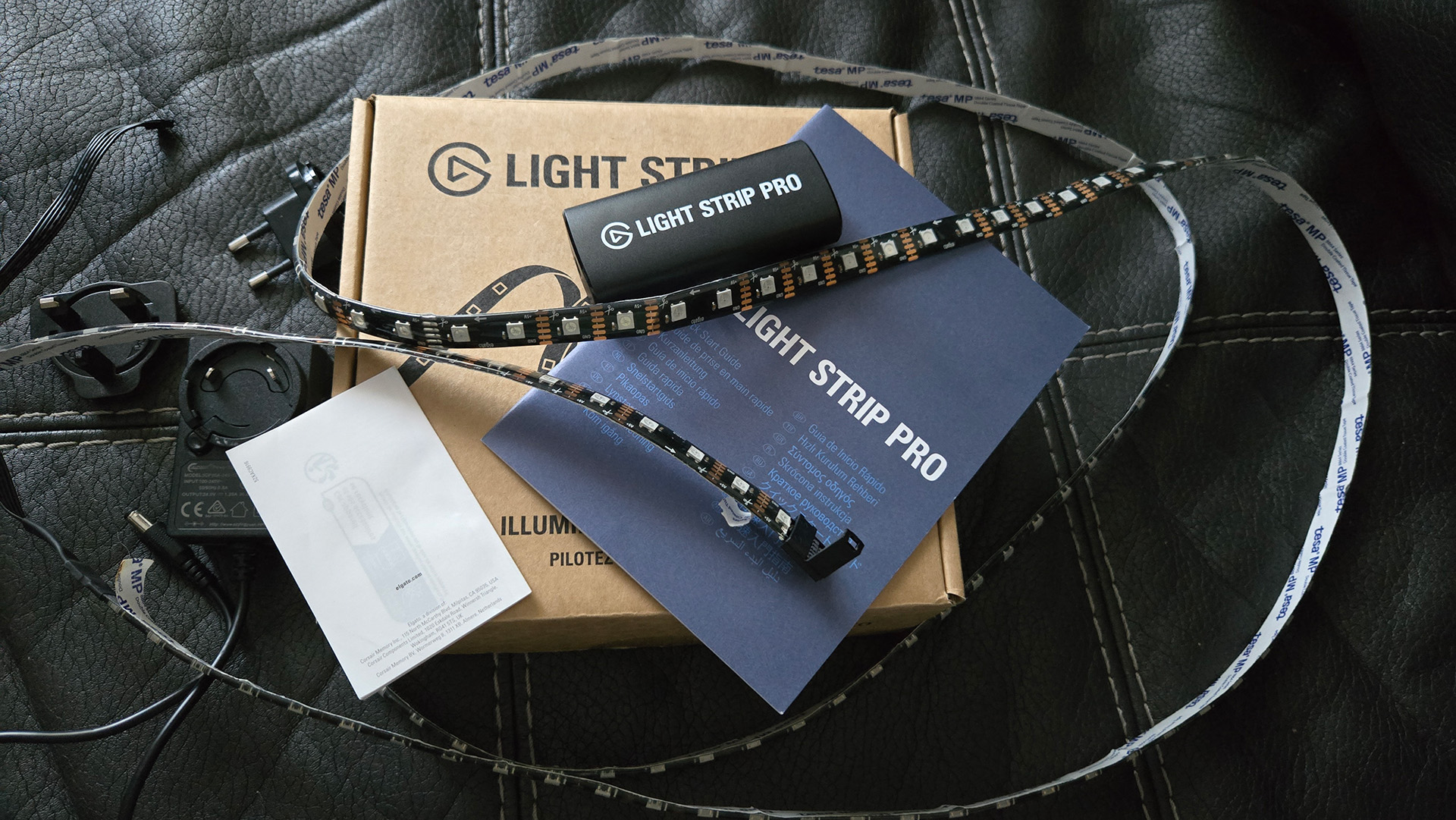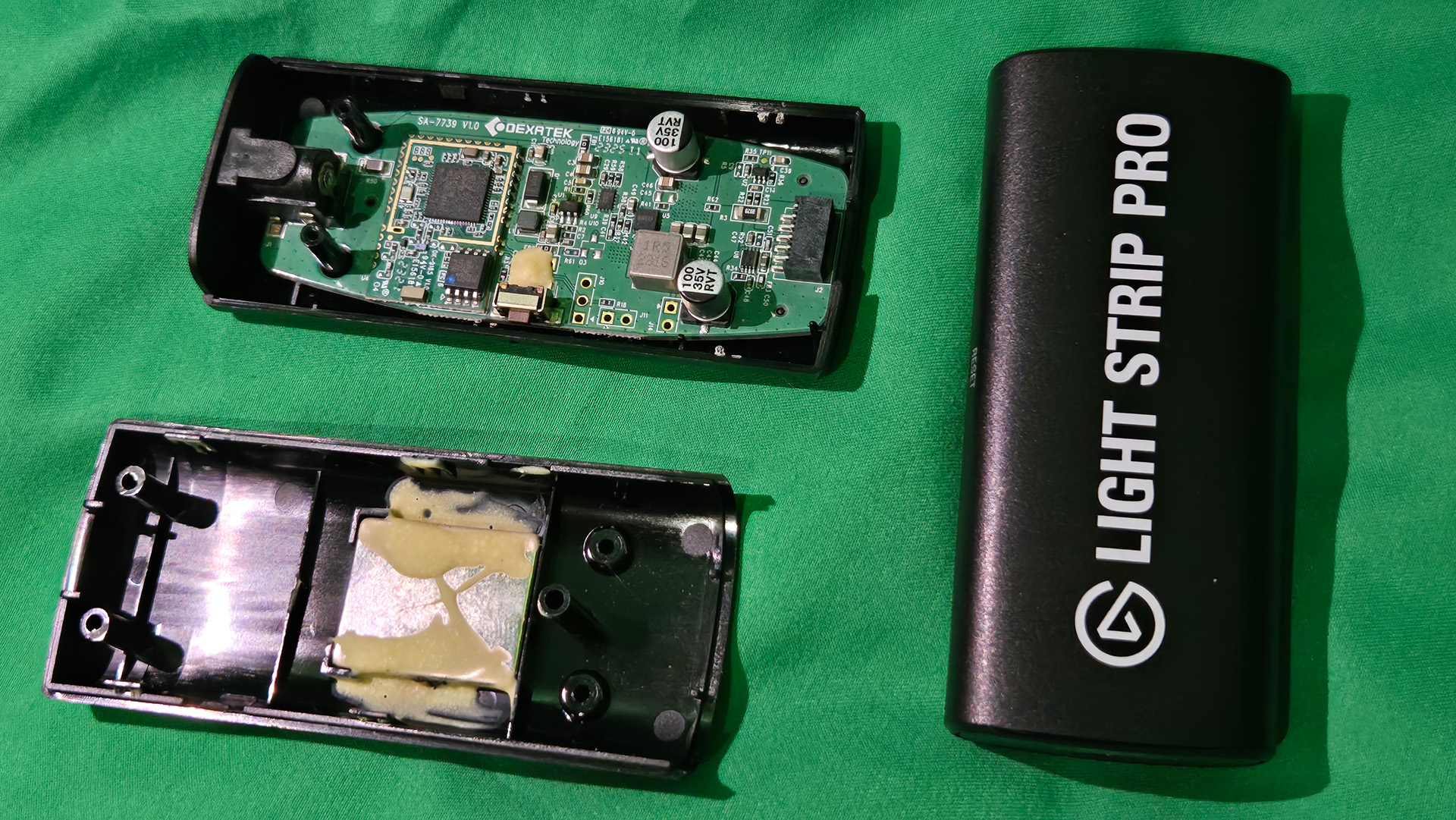Our Verdict
Elgato's Light Strip Pro delivers some of the best looking diodes on webcam but limited use cases elsewhere.
For
- Many cut points
- Powerful primaries
- Dynamic scale of brightness
Against
- A bit slow
- 2 m limit
PC Gamer's got your back
Look, I didn't say this but I've heard you're not even a real PC gamer without some RGB strip lighting illuminating your setup. It's no surprise gamer brands are keen to agree and push out ever-more RGB-laden products. Elgato among them, which has just released a line of two-metre RGB light strips, marketed to gamers.
Known as the Light Strip Pro, it aims at becoming the top choice among streamers with features like programmable scenes and camera-ready diodes. And in a lot of ways it makes some really good points.
Inside the box you'll find one spooled light strip connected to a controller box, cables, power supply, manual, and even a few strip connectors. There's minimal packaging or fanfare to the packaging, which is great for keeping the environmental footprint minimal while still giving you everything you need. Getting the strips going is as easy as plugging them into power and using Elgato's Control Center app on either your phone or computer (Mac included, if you must).
Control Center lets you change the colour and brightness of your lights. There are a handful of premade scenes to run through with some pretty basic animations. Some of these will have extra options to set colours, speed, or direction of the movement, but a fair few don't.
For anything more specific you need to download Elgato's Javascript Scenes Builder tool, and get to coding.
Elgato has tried to make this as friendly as possible, especially if you're not familiar with Javascript. It's also limited to scenes and just to the lights themselves—this means you can't do things like set midi inputs from your electric drumkit to give responses. Thankfully, there's a readme file as well as a few examples, and you can test your code on the site. It's probably a good idea to test what you had in mind before purchasing the lights, in fact, especially if you're hoping for specific Java coding controls.
I played with the coding functionality a little, but ended up mostly doing simple things like editing existing codes to my colour preferences.
The way scenes are implemented this way is surely a nod to streamers. When you change a scene in Control Center, It takes about the same time to change the scene on the lights as a standard transition in OBS. It makes a tonne of sense for someone wanting to set up different streaming vibes per scene without having to set up separate solutions. Plus you could set it all to respond to a Stream Deck for easy mode shifts and transitions.
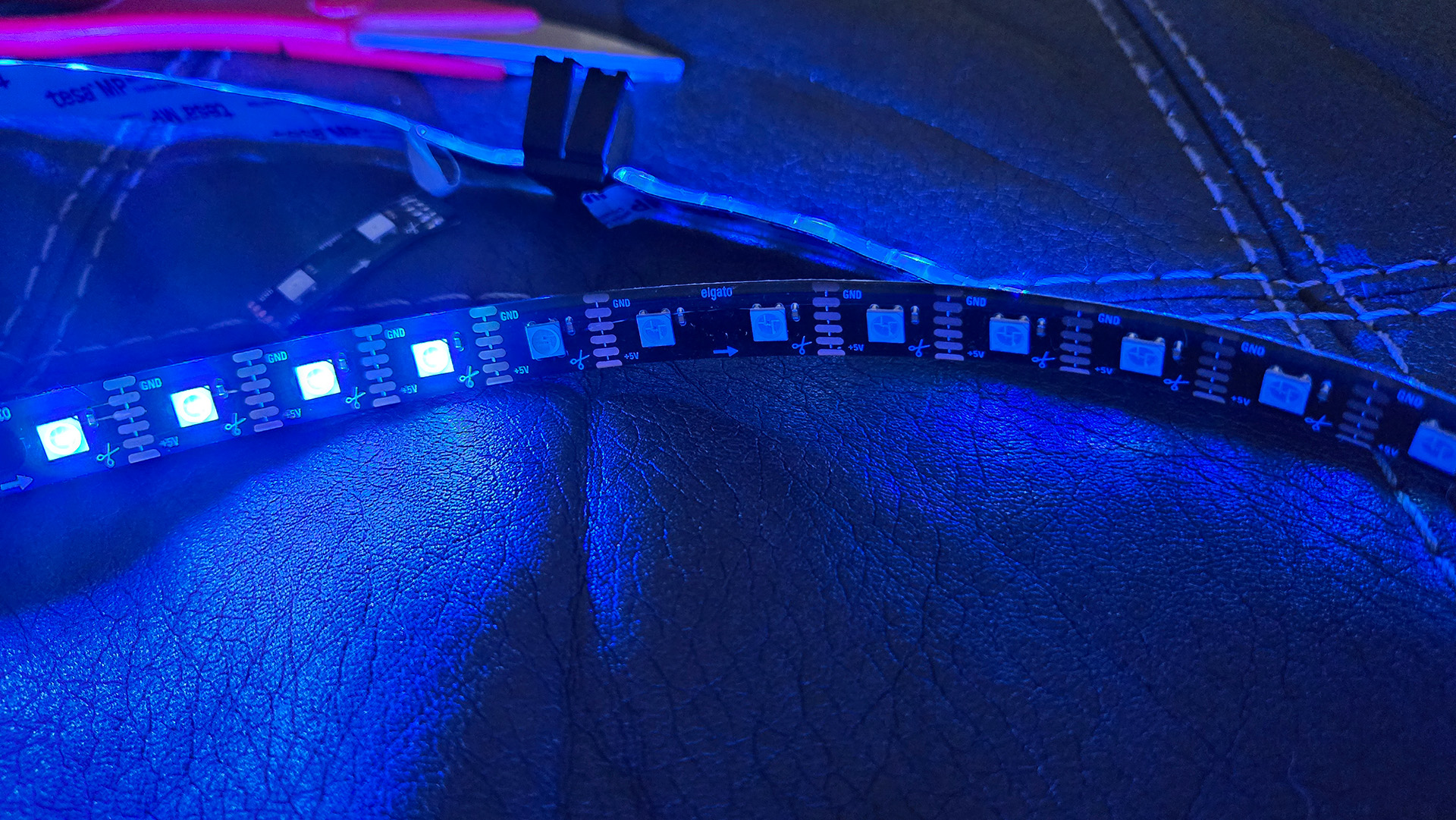
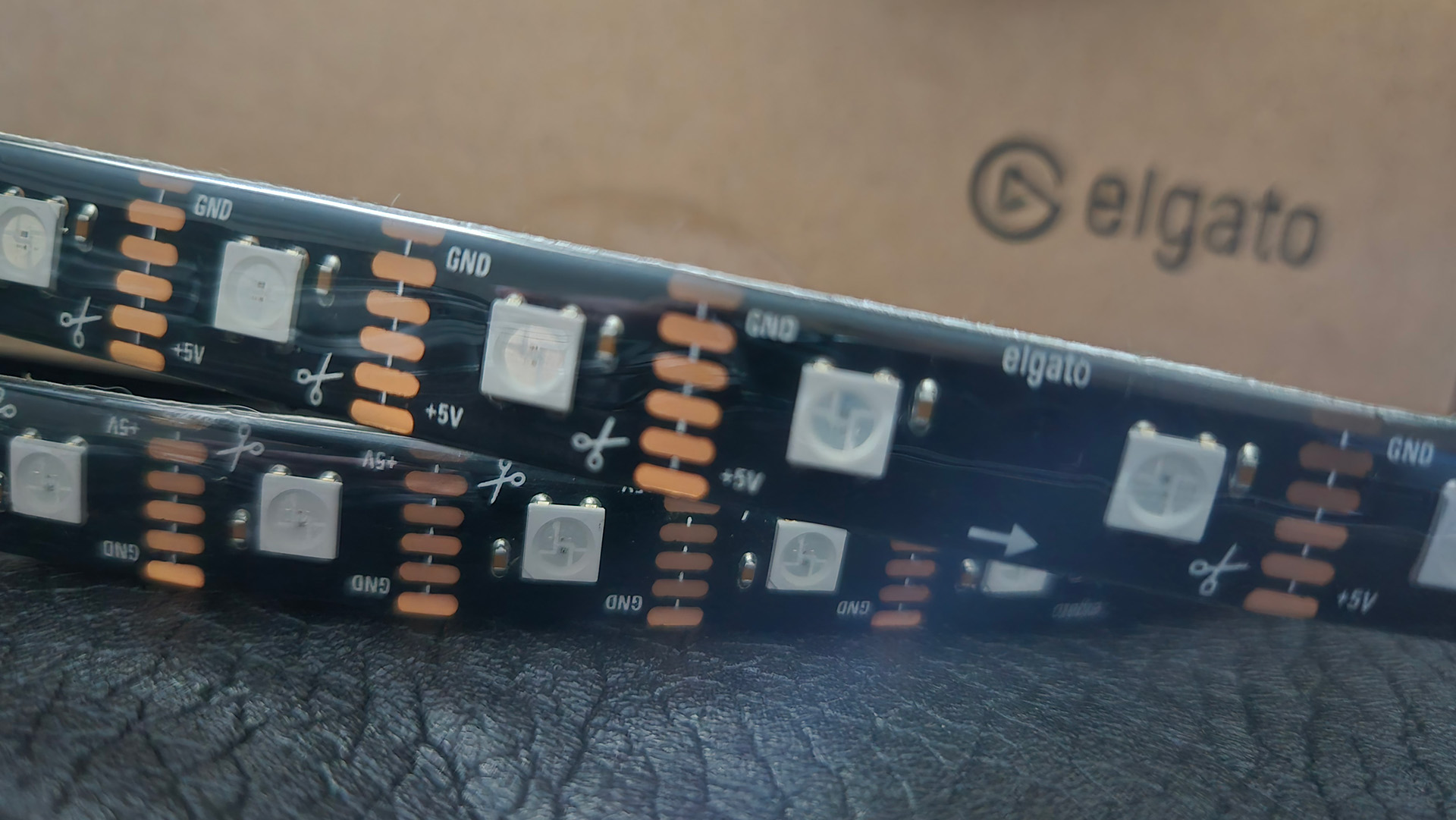
One of the other big boasts these lights have for streamers is being camera ready. A lot of cheaper lights will often have a very visible flicker on camera, and even some fancier ones do on the lower brightness settings. These don't.
Being able to get these lights on a low brightness setting is neat, especially to prevent blowing out sensitive webcam sensors. Plus, while the light strip is restricted to RGB, the colours generally have a vibrant depth to them with rich primaries that still show up nicely on low brightness settings. Out of all the LED light strips I've tried, which is a fair few these past few months, these are easily the friendliest to film.
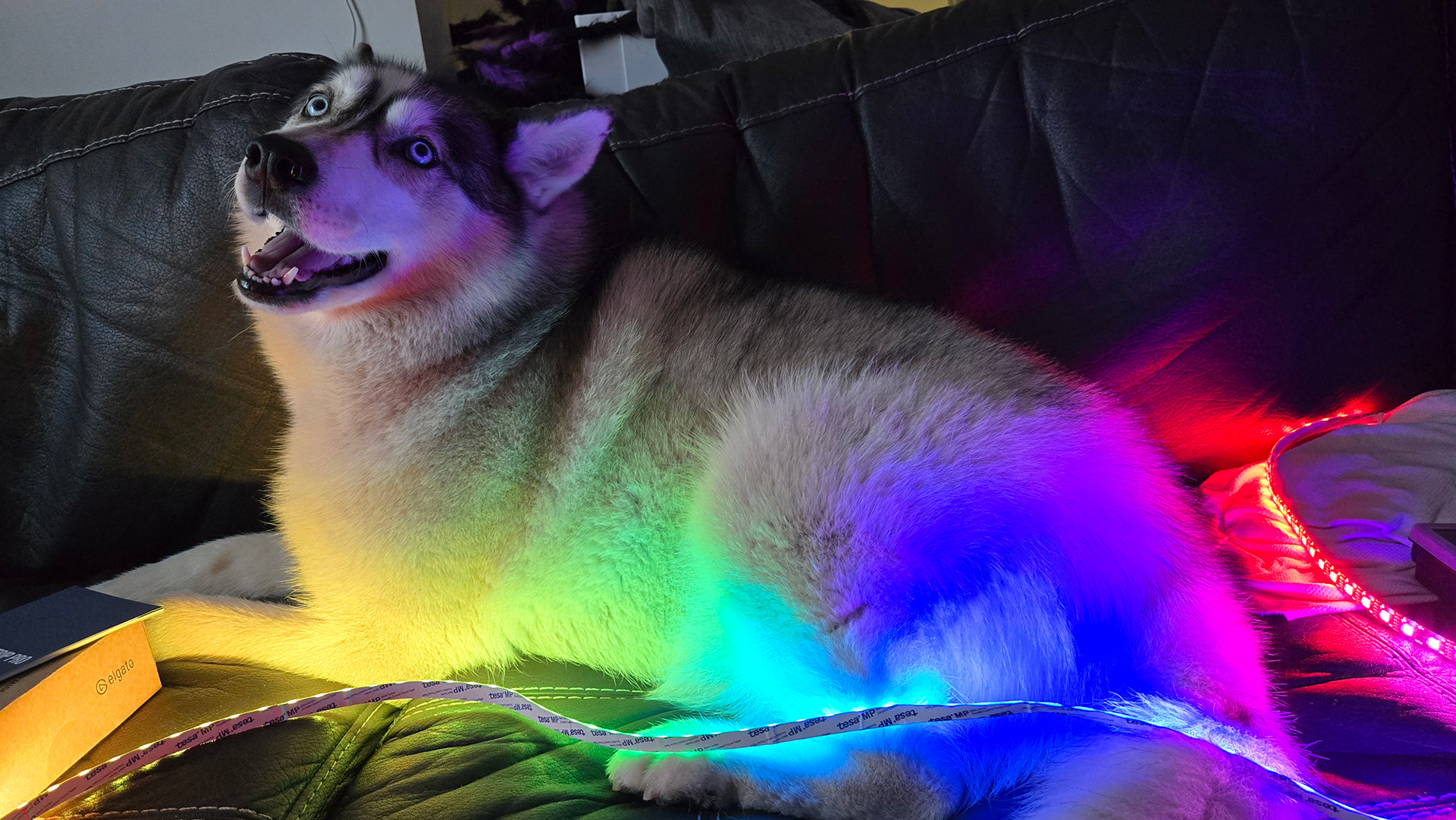
✅ You want on-camera lights: These are easily the friendliest diodes to film with a webcam thanks to the rich colours and ability to actually drop the brightness way down. Lots of connectable cut points also make for easy customisation.
❌ You want easy options: Elgato's apps have a few built in options to play with for these lights, but it's a bit limited. You're going to want to bust out some Java for your more specific implementations.
❌ You want responsive lights: You can set a scene to have these sparkle, fade, or chase but they won't actually respond to anything like input from another device, music, or screen mirroring.
The Light Strip Pro sports a tonne of cut points at almost every centimetre or so across the metal connectors, which is good to see. These can't be lengthened as the box limits the output to a two-metre strip. If you get some silly ideas in your head and try to attach some extra length just to see, the lights will just cut off after the two metre mark. Still these handy points make it trivial to shorten to specific lengths and even add things like corner connectors to get your perfect shape. It's just that little bit easier to make these lights fit your room than the other way around.
These are the first LED strips I've seen where someone had the good sense to put magnets in them. Almost everything I want to attach these to is metal, and it makes it a breeze to move them around and test them before resorting to the adhesive. I just really wish they were a bit stronger. The weight of the strip is still enough to pull it away and have them fall with magnetic connection alone, so it feels more like a temporary helper than a fixing solution. Still a very smart touch for some PC gamer orientated lights.
The Elgato Light Strip Pro is clearly a purpose made piece of kit. It's not going to respond to music, give key light whites, or be able to mirror your screen lighting, but it is going to deliver some of the best on-camera style points. $50/£50 for a two-metre strip is fairly standard pricing for gamer lights, but they can vary a lot. At least programmable scenes, lots of rejoinable cut points, magnetic holdings, and prioritising on-camera appearance is giving streamers some new tools to play with at this price point.
Elgato's Light Strip Pro delivers some of the best looking diodes on webcam but limited use cases elsewhere.

Hope’s been writing about games for about a decade, starting out way back when on the Australian Nintendo fan site Vooks.net. Since then, she’s talked far too much about games and tech for publications such as Techlife, Byteside, IGN, and GameSpot. Of course there’s also here at PC Gamer, where she gets to indulge her inner hardware nerd with news and reviews. You can usually find Hope fawning over some art, tech, or likely a wonderful combination of them both and where relevant she’ll share them with you here. When she’s not writing about the amazing creations of others, she’s working on what she hopes will one day be her own. You can find her fictional chill out ambient far future sci-fi radio show/album/listening experience podcast right here. No, she’s not kidding.
